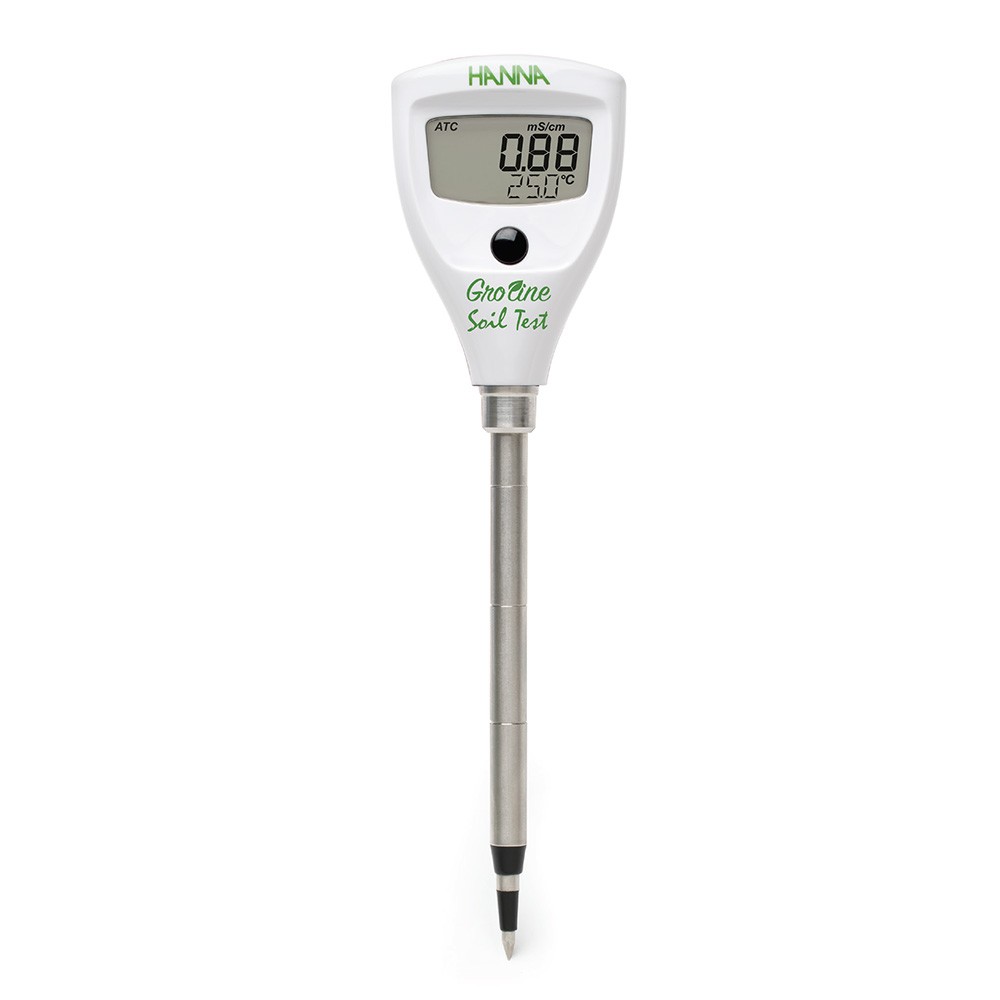What measuring Electrical Conductivity (EC) tells about your water, soil and plant health ?
A soil-based farmer usually focuses on what nutrient to apply to his soils and is mostly looking for that “magic product” which after applying will take care of the yields and quality automatically.
This creates over use of unknown fertilisers and PGRs and mostly an over-use of them leading to ultimately poor yields, poor nutrition levels, massive pest and disease attack and ultimately frustration.
This cycle never stops once it begins. The main culprit here is “ignorance” – which is never a bliss when it comes to agriculture.
When we talk about a scientific basis to farming, we mean using tools, instruments and meters easily available at affordable prices which can change the way you see crops responding to a fertilizer application. Even a simple thing like “Water” (which is a fertilizer) is ignored many times thinking the source is good and so the quality of water is already by default good for use.
We offer testers and instruments on our website (check list here ) so that farmers start using them and gain benefits from them because what is measure can only be managed…!
We have pushed a lot of farmers associated with us to start testing their Water, Soil and Sap for parameters like pH, EC and Brix. These 3 parameters when measured and monitored will help you tweak your nutrition program, increase or decrease water application and will always keep you ahead in the game.
You can check other articles on our Blog on measuring SAP – Brix and pH and you already are aware of soil pH, we would like to highlight here the importance of “Electrical Condctivity (EC)” of water and soil.
WATER EC :
Conductivity reading (mS/cm)
< 0.8 : Safe for use.
0.8 – 3.00 : Progressively increasing danger of salinity problems. Sensitive plants will show symptoms.
> 3.0 : Unsafe for use.
These are a few suggestions to minimise problems where saline irrigation water is used :
1. Use an open, well-drained mix and irrigate frequently to minimise increasing salt concentration as mix dries out and irrigate heavily to leach out any accumulated salt.
2. Avoid sprinkling on leaves with saline water.
3. Find a better quality water source if possible.
4. Install a UB’Cal Water Conditioner (no recurring cost, no servicing post installation).
SOIL & POTTING MEDIA EC :
Conductivity reading (mS/cm)
< 0.1 : Very low. Fertilizer required.
0.1 – 0.3 : Safe
0.3 – 0.8 : Safe. Higher values in this range may affect some species, particularly if drainage is poor.
Seed germination may be affected.
0.8 – 1.0 : Salinity problems depending on species, potting mix and drainage. Specific ion effects likely.
Seedling growth likely to be affected.
1.0 – 1.5 : Plant growth likely to be affected. Leaf symptoms should be apparent.
> 1.5 : Too high
These are a few suggestions to minimise fertiliser salinity problems :
– Do not apply high concentrations of soluble fertilisers to force plant response.
– When liquid feeding, use larger volumes of low concentration frequently rather than concentrated volumes not frequently.
– Regularly leach out pots with plain water to remove any accumulated salts.
We hope that you will start maintaining records (test weekly) and here is a table that will help you maintain records and take corrective actions on field or in your Terrace Gardens….
Date Media pH EC Brix
Water xx xx xx
Soil xx xx xx
Sap xx xx xx
Professional Meters we recommend :
4. Sap pH meter
Feel free to post comments or experiences or record keeping tips for our readers and your fellow farmers.
Cheers,
Team D2F.

